
Cool Tools: Matthews RoadRags
More and more, many of us are finding ourselves shooting “on location” away from the comfort and equipment in our studios. What makes studio shooting so much easier for most of us is that we have (1) control over the environment, and, (2) all of our tools are in one place, ready for use.
To me, no tools are more important than those that control or modify my lights. I’ve got soft boxes, diffusion panels, grids, beauty dishes, reflectors and a host of other things to make life easier. Although is it possible to break some of them down and pack them for the field, truth be told, it’s not that easy (or, I’m too lazy) and so I don’t always do it.
A while back, I went up on the Matthews Studio Equipment web site to look for a boom. I’ve known Matthews products for a long time. I learned to light on film and TV sets where Matthews products are mainstays. I’ve had Matthews C stands and arms in the studio since Day 1.
What I found was a product Matthews calls RoadRags — a very cool portable light control kit, that has been predominantly marketed to film makers but is a set of simple tools sure to make things easier for photographers, too. So, I got a set.
One thing of note: these tools were developed for the constant or hot lights that are used on television and movie sets. Why constant lights? Because they have to be able to capture constant movement — something one cannot do with a strobe. (As camera manufacturers turn our DSLR’s into dual mode, still/video cameras, constant lights will become a part of our lives, too; soon, I will write a post comparing the capabilities of strobes and the new, modern continuous lights.)
What’s in my RoadRags kit? Scrims, silks, flags and reflectors. Scrims, silks and flags? Those are movie set terms. Let’s translate them into words we use. And, let’s talk about what each piece does.
Scrims (also known as screens and not to be confused with “scrums” which have something to do with rugby) are used to diminish the intensity/output/quantity of a light. They were developed at a time when it was difficult to control the output of hot lights; many did not have adjustments — you controlled the output by choosing the power of the bulb you installed. Screens — were aptly named; the originals were made of metal screen — very much the stuff you would find in your screen door. The thicker the screen, the more it would reduce the intensity of the light. To use them, you’d simply put them in front of the light. Take a look at this picture of one of my favorite lights, my Mole Richardson Model 412 Fresnel light (which spent its early years at Disney Studios — or so the spray paint on it says.) That green thing on the front of the lens is a screen.
My RoadRags kit has the functional equivalent of a set of screens — with some noted advantages. Instead of metal screens, my kit comes with light weight, foldable, cloth mesh-like-panels — each of which will cut the output of a light by a different percentage. One of the things I like best about them is that they can be used to modify the output of the entire light or a part of it. Getting too much light on the body but not the face, want a one stop difference between the two? Use a scrim over the part of the light that is hitting the body. One light — two output intensities. Pretty cool.
Until I saw this kit on the Matthews site, I’d never really thought about this easy solution to super tuning my studio lights. It was something I lived with on TV and film sets — but, because I have so many grey moments, I never brought it over to this side of my life.
As with many light modifiers, there is a low cost alternative — one can make simple frames, staple screens to them, and use them in the same way. Not as elegant, not as portable, but a screen is a screen. Just try to make sure you buy non-reflective screen so that it doesn’t create more problems than is solves. And, you’ll have to experiment a bit with your meter to determine just how much light each is cutting off.
Flags or Gobos hold a familiar space in the photographers toolbox. Gobo, as I learned it, stands for “go between”. It is used to block light — either to keep it away from the subject or out of the camera’s lens. My RoadRags kit includes a black, opaque flag. Want a low cost alternative? A piece of flat black cloth or a matt black piece of cardboard will do the trick.
Silks are what we call “diffusion panels” and are at the heart of the modern soft box. Instead of affecting the quantity of the light, they are used to affect the quality of the light. Diffusion softens and spreads the light. The amount of softness and spread are controlled by several factors, including the thickness of the material and the distance between
the panel and the light.
My first light modifiers were home made diffusion panels — with frames made out of PVC pipe and panels made out of white, RipStop nylon. I like to think that I am the king of PVC — much of my early studio equipment was made from stuff that came out of Loew’s plumbing department. Panels are not the same as soft boxes, they don’t have the side walls so important to indirect lighting, but for many starting out, they are a low cost alternative and a less expensive way to get started.
My RoadRags kit contains a diffusion panel. This picture shows it attached to my portable strobe, my Profoto 600BR. Often, I use a soft box, mounted on the 600BR. But, that means I have to carry the box. The diffusion panel is more portable.
And, there’s one other major advantage to using the RoadRag. As you can see in the picture, I’ve got a gel on the light; sometimes I use the gel to balance the strobe’s color temperature to that of the predominant light in the room (usually altering the daylight color temperature of the strobe to the room’s tungsten or fluorescent); or, I use gels to alter the mood of the image. Either way, it’s pretty difficult to use a gel inside of a soft box. By using the RoadRag “silk” or diffusion panel, I retain access to the light and can tape the gel on the reflector, with ease.
I also added a silver reflector to my RoadRags kit.
What makes the kit really cool is the fact that it is anchored by a set of quick set up, quick take down, lightweight frames. More on all of this later.
Why did I choose the RoadRags kit instead of the home-made alternatives?
First, because I love innovative things that are well made. I just can’t help it. When form and function merge, seamlessly, I want it.
Second, because, I truly believe I can not get the same quality and convenience by doing it myself. This kit is so versatile and light, that it goes with me every time I leave the studio. And, I find that I am using it in the studio, too, to fine tune my lighting patterns.
Third, because considering what you get, the price is right. I would take a lot time to make the home made stuff, time better spent behind my camera.
And, finally, because as much as I don’t like to admit it, people do judge us by the tools we use and, long ago, Doug Box convinced me that my home made stuff did not create the most professional appearance.
And, that’s why the RoadRags kit is the first subject of what will be a series on this Blog/Site called Cool Tools.
But Wait — There’s More!
One of the reasons I moved away from my newsletter format to a Blog/Site was my desire to create video tutorials. While Nina Sossen was developing this site, I decided to do a down and dirty trial video just to see how the technology worked. This was shot in one continuous take using the iSight camera in my MacBookPro. It was “edited” in iMovie and posted on YouTube (that seems to be the easiest way to get video into WordPress.) It’s a far cry from what I used to do, full crews, expensive equipment, professional editors, but its simplicity is its own reward. I hope you like it.
(Copyright: PrairieFire Productions/Stephen J. Herzberg — 2009)
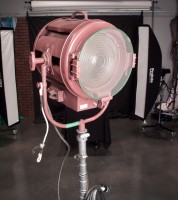
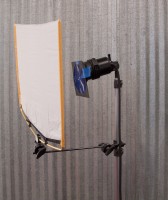
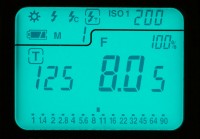

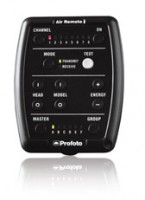
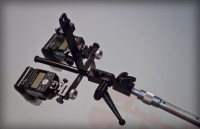
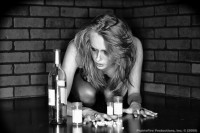
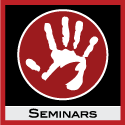

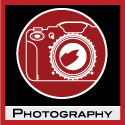
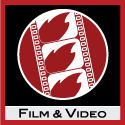
Leave a Reply